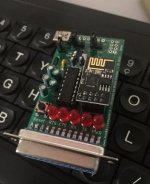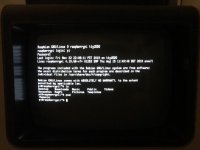Hutch
Experienced Member
I recently acquired a VT-102 in good working condition. I was thinking about connecting it to a Pi running a PDP emulator but I think some level shifting is required to get RS-232 working on the Pi.
Then I wondered if there was a decent WiFi modem I could just plug into the VT-102 serial port and then I could just telnet to my Pi or maybe other systems out on the internet.
A quick google search reveals a number of WiFi modem options but also leaves me with some questions.
A VT102 manual I found says that the serial port is RS-232-C, is that so? or is it possible it's a variable that depends on the model or options?
RS-232-C is 5V? So level shifting may not be necessary with a USB to serial converter on the Pi?
Any recommendations for a specific WiFi (or Ethernet) serial to Telnet device? Are there any that can do SSH?
Thanks

Then I wondered if there was a decent WiFi modem I could just plug into the VT-102 serial port and then I could just telnet to my Pi or maybe other systems out on the internet.
A quick google search reveals a number of WiFi modem options but also leaves me with some questions.
A VT102 manual I found says that the serial port is RS-232-C, is that so? or is it possible it's a variable that depends on the model or options?
RS-232-C is 5V? So level shifting may not be necessary with a USB to serial converter on the Pi?
Any recommendations for a specific WiFi (or Ethernet) serial to Telnet device? Are there any that can do SSH?
Thanks




